
Exercise Report : Exercise VEGA 2010 - Decimomannu
In November 2010, Italian and Israeli jets deployed to Decimomannu air base on the island of Sardinia for the bi-national exercise VEGA 2010. Giampaolo Tonello delivers his report and photos taken at the base.
Exercise VEGA 2010
Since 2008 the Aeronautica Militare Italiana (AMI - Italian Air Force) has adopted a new typology of air exercises. Starting with Trinax 2008, followed by Starex 2009 and Starex 2010, and most recently VEGA 2010, the subject of this report. The aim of the new type of exercise is to minimize costs by using the logistics offered at the Decimonannu air base, like dormitories, refectories and other infrastructure and services, but above all the well trained and qualified people already working on the base. The participants thus stay at the base, cutting the need for hotel accommodation or long transit flights during the exercise from home bases. Compared to Spring Flag for example, these exercises are smaller in scale to improve training value and reduce also the environmental impact. Avoiding problems with civil traffic in the airspace around the nearby airport of Cagliari is considered a primary target.
- Here a brief summary of the series of exercises prior to Exercise VEGA 2010:
- Trinax 2008 was held in autumn 2008 with participation of Italy, Israel, Germany and NATO AWACS resulting in 14 COMAO, 343 Missions with 485 Flying hours.
- Starex 2009 was held in autumn 2009 with participation of Italy, Israel and NATO AWACS resulting in 18 COMAO, 451 Missions with 700 Flying hours.
- Starex 2010 was held in spring 2010 and saw the participation of the only Italy and NATO AWACS resulting in 18 COMAO, 581 Missions with 858 Flying hours.
The Exercise VEGA 2010 (bi-national exercise between Italy and Israel) took place from 15 to 26 of November with Italians arriving the week before while the Israelis arrived on Monday 15th. All the participants were:
| VEGA 2010 Participants | ||
| Country | Aircraft | Unit |
| Italy | F-16 ADF | 18º gruppo, 37º stormo |
| F-2000 Typhoon | 9º gruppo, 4º stormo | |
| AMX | 103º gruppo, 51º stormo | |
| 13º gruppo, 32º stormo | ||
| Tornado ECR | 155º gruppo, 50º stormo | |
| MB-339A-MLU | 651ª squadriglia, 51º stormo (weather ship) | |
| Israel | F-15D Baz | 106th Squadron from Tel Nof |
| F-16B Netz | 116th Squadron from Nevatim | |
| 140th Squadron from Nevatim | ||
| G550 CAEW Eitam | 122nd Squadron | |
| NATO | E-3A Sentry | NAEW&CF, Geilenkirchen |
The systems of the Nike Hercules (no longer operational) and Spada missile sites of Cape S. Lorenzo were also activated to simulate surface-to-air missile threats, also the EWITR (Electronic Warfare Instrumented Training Range) at Perdasdefogu was used where other surface-to-air systems were simulated, such as older Soviet and newer systems, producing the high level threat environment required for the training. Based at Decimomannu, a local AB-212 Search-and-Rescue helicopter supported the exercise, including some CSAR training missions.
AACMI
Nowadays Decimomannu is the most valuable base in Italy for air combat training, because of the possibility of taking advantage of the new AACMI system delivered in Autumn 2002. Air Combat Manoeuvring Instrumentation is the set of tools, electronics, computers and sensors (and we may also add the very qualified people operating the system) that enables training air combat manoeuvring and engagements without the use of real weapons. Every aircraft participating in the exercise carries a pod that broadcasts data to other participants and the central system at the base.
Second-generation Autonomous ACMI relies on time-space-position data collected by the pods using a GPS receiver, rather than triangulation of the pod’s signal by several ground stations on the range. Developed by Israel, the system can be used with the Israeli EHUD pod or the German-Israeli Flight Profile Recorder (FPR) pod, which is nowadays used by many European countries. Like the old Airborne Instrumentation Subsystem (AIS) pod, the pod is usually carried on AIM-9 Sidewinder rails using the standard Sidewinder umbilical cord for power and data connection, but also features the AMRAAM connector. In addition to the GPS data, the pod collects data from the aircraft’s onboard systems collected via the databus as well, including information needed to simulate the use of radar guided and infrared weapons. When used autonomously, the data would be recorded by the pod for use in debriefing. At Decimomannu the transmitted data is collected to track all movements and events in real-time, while integrating all data for display at the AACMI room to enable better monitoring and evaluation by the exercise’s control and command.
Mission
We had the chance to enter the AACMI control room and witness a declassified part of a mission. This was a really interesting experience, watching three different screens on which all the aircraft were visualized, while hearing Magic (AWACS) and the fighter pilots on the radio, and being among other pilots looking at what was happening. With all the information being presented in real time, it was really difficult to keep track and understand what was going on!
The mission included an attack by the red forces (attackers) coming from the sea (with combat taking place in the MOA Est, a very large reserved airspace area in the middle of the Mediterranean sea, east of the island) and over land on the eastern coast of Sardinia. Red forces consisted of the 18° gruppo F-16s and some 9° gruppo Eurofighter Typhoons supported by the Israeli G550 CAEW. The Blue forces (defenders) included all other participants.
Monitoring the air battle over the Mediterranean, the advantages of using AACMI to control the training became apparent with every partipants monitored by the controllers. Not just the maneuvres and combat, but also in terms of safety. The screen indicated when a participant was exceeding the set rules of engagement in terms of speed and altitude. The mission on the island contemplated the inactivation of enemy anti-aircraft batteries on the ground by the Tornados, clearing the way for an attack by the blue forces.
Additionally, a Combat Search and Rescue (CSAR) operation was simulated with AMX strike aircraft used for Reconnaissance and Close Air Support, supporting the AB-212 helicopter in rescuing a possible survivor.
Israeli Jets
In the end Col. Frare (Chief of exercise) and Col. O. (106th Squadron Commander) answered our questions and it was really interesting to see how the Israelis appreciate these exercises. In fact they are qualified to NATO standards, but they always fly different missions in their country and are not able to train in airspace reservations as large as the MOA Est area.
Among other things, we were also told that the Israeli Air Force attended with two-seat fighters alone to be able to participate with as many pilots as possible, maximizing the value of each sortie flown during the exercise. The F-16B Netz two-seaters came from Nevatim’s 116th and 104th squadrons, while the five F-15D Baz belong to 106th Squadron from Tel Nof. The participating F-15Ds included number 979, which sports three Syrian MiG-kill marks reminding us of the aerial battles of the war in 1982. Furthermore three of the aircraft were fitted with what is believed to be the Elta Systems EL/K-1891 Satcom system for voice, video and data link by satellite, housed in quite a large dome just aft of the canopy.
A really interesting participant was the Israeli Eitam which is a modified Gulfstream 550 for AEW&C missions, a very rare sight here in Europe. The Israelis themselves were interested in the behaviour of this plane, because they operate just three of them with the first having been delivered in 2006 followed by the second and third in 2007 and 2008 respectively. So they are still evaluating the best operating procedures to use them to their fullest potential. During all the missions Italian officers were also onboard the aircraft to assist the Israelis with air traffic control communications and procedures.
Conclusion
- Finally, some numbers of VEGA 2010:
- 13 COMAO, 346 missions, including 7 DACT, 3 CSAR and 6 HVA protection, for a total of 588 flight hours with 38 different aircraft, while 100 crews and a total of 592 soldiers (457 Italians and 135 Israelis) took part.
Both the Italian and Israeli officers were really satisfied with the results from the training operations during Vega 2010 and confirmed the validity of the adopted formula, making it a significant training activity increasing standardization and cooperation between the armed forces of both countries at less costs than participation in major “Flag” exercises.
From my side, I really appreciated that the AMI organized a media day this year, allowing me (and other reporters) to be close to the action on the base and virtually even during the exercise in the AACMI room, while also getting a good view of the still pretty exotic and rarely seen Israeli aircraft, instead of having to take photos from outside the base to illustrate our reports. So I would particularly like to thank Capt. Filippo Conti from the Stato Maggiore Aeronautica for organizing this excellent media day.
Report and photos by Giampaolo Tonello ( view portfolio )

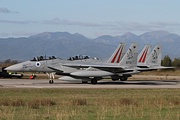
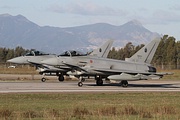
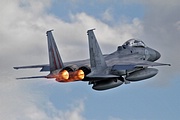
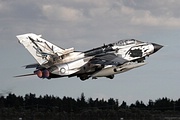
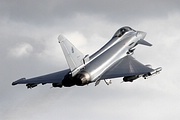
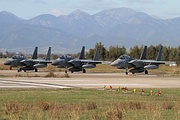
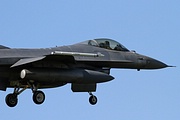
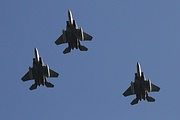
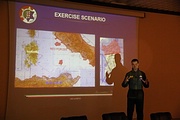
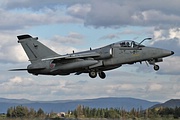
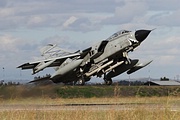
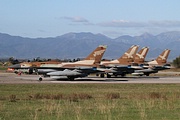
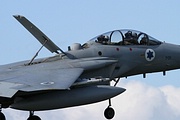


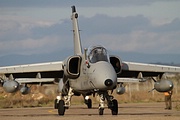
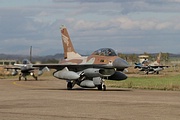
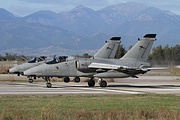

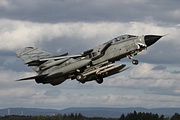
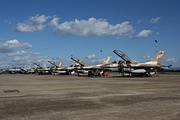
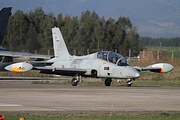
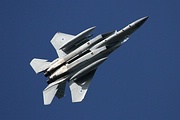
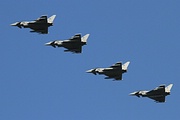
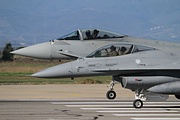
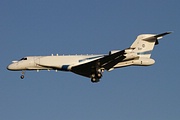
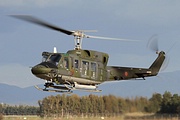
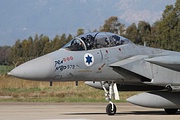
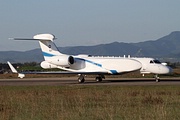
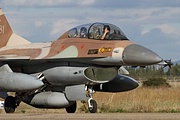
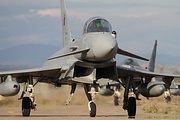
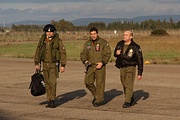































































 Back to Index
Back to Index